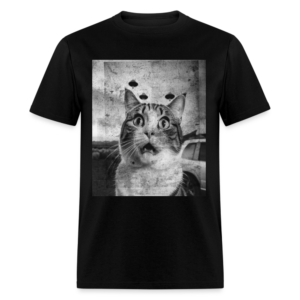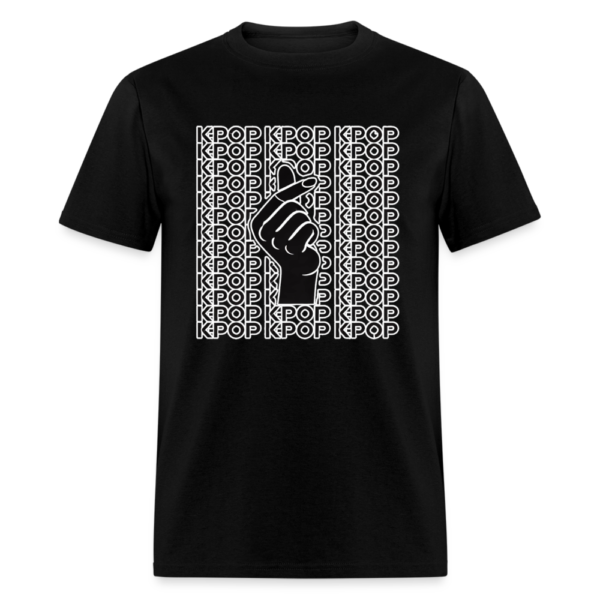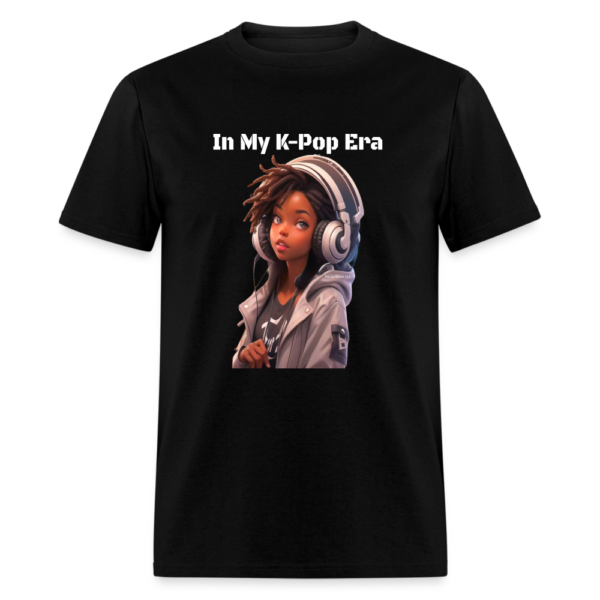Your cart is currently empty!
Category: MUSIC
J-Hope’s ‘Hope on the Stage’ Solo Concerts Sell Out in an Hour, Breaking Records
J-Hope of BTS Sells Out ‘Hope on the Stage’ Solo Concerts in Seoul Within an Hour
The global phenomenon J-Hope, a member of the legendary K-pop group BTS, has once again proven his immense popularity. His highly anticipated solo concert series, “Hope on the Stage,” set to take place in February 2025, sold out within an hour during the global ARMY pre-sale. Scheduled for February 17, 18, and 19 at the iconic KSPO Dome in Seoul, the concerts will host over 45,000 fans eager to see J-Hope perform his electrifying setlist.
Unprecedented Demand for Tickets
The demand for “Hope on the Stage” tickets was nothing short of extraordinary. Fans from all over the world flocked to secure their spot, resulting in a complete sell-out in record time. The global ARMY, BTS’s dedicated fandom, expressed their excitement across social media platforms, flooding hashtags like #HopeOnTheStage and #JHopeLive with enthusiastic posts.
Many fans shared stories of how they prioritized purchasing tickets over other commitments. From waking up at odd hours in different time zones to rearranging personal schedules, the dedication of the ARMY to J-Hope’s solo concert was evident. The KSPO Dome, with a capacity to host over 15,000 attendees per show, will now become the epicenter of K-pop for three consecutive nights.
A Milestone in J-Hope’s Solo Career
J-Hope’s journey as a solo artist has been nothing short of remarkable. Following the success of his debut solo album, Jack in the Box, and memorable performances at international music festivals like Lollapalooza, the “Hope on the Stage” concert series is another testament to his growing influence in the global music scene.
Fans are eagerly anticipating the setlist for these concerts, hoping to hear live renditions of hits like “More,” “Arson,” and other tracks from Jack in the Box. J-Hope is also known for his dynamic stage presence and intricate choreography, promising an unforgettable experience for attendees.
Fans’ Reactions to the Sold-Out Shows
The excitement among fans is palpable. Many took to Twitter, Instagram, and TikTok to share their elation and heartbreak, as not everyone managed to secure tickets. The global ARMY’s unwavering support for J-Hope highlights not only his impact as an artist but also the sense of community within the fandom.
The Significance of “Hope on the Stage”
This concert series marks a pivotal moment in J-Hope’s career. It is a celebration of his individuality as an artist, showcasing his unique musical style, creativity, and ability to connect with audiences on a personal level. For many fans, attending “Hope on the Stage” is more than just going to a concert; it’s an opportunity to witness history in the making.
The KSPO Dome, a venue known for hosting some of the biggest names in the music industry, will serve as the perfect backdrop for J-Hope’s performances. The location adds to the significance of the event, as it brings J-Hope back to his roots in Seoul while sharing his artistry with a global audience.
The Broader Impact of J-Hope’s Solo Success
J-Hope’s solo achievements continue to push boundaries in the music industry. As a member of BTS, he has already contributed to breaking numerous records and barriers for K-pop on a global scale. His solo ventures, including his album and performances, have further solidified his reputation as a versatile and influential artist.
“Hope on the Stage” also highlights the rising trend of K-pop idols pursuing solo projects while remaining active in their groups. This approach allows artists like J-Hope to explore their individual artistic visions, offering fans a deeper connection to their music.
What Fans Can Expect
While specific details about the concert production remain under wraps, fans can expect a visually stunning show with top-tier stage design, lighting, and choreography. J-Hope’s attention to detail and passion for performance will undoubtedly make “Hope on the Stage” an unforgettable experience.
In addition to performances from Jack in the Box, fans are speculating about potential surprise elements, such as guest appearances or exclusive merchandise. Given J-Hope’s history of pushing creative boundaries, the concerts are sure to exceed expectations.
Join the Conversation
Are you one of the lucky fans attending “Hope on the Stage”? Or are you cheering from afar? Share your thoughts and excitement in the comments below. Let us know your favorite J-Hope songs and what you’re most looking forward to at the concerts!
K-pop Words With Heart Hand Symbol Aesthetic Unisex Classic T-Shirt
$9.99K-pop Words With Heart Hand Symbol Aesthetic Unisex Classic T-Shirt. “Celebrate your love for K-Pop with the K-pop Words With Heart Hand Symbol Aesthetic Unisex Classic T-Shirt! This stylish tee showcases a unique design featuring the word ‘K-Pop’ intertwined with a heart hand symbol, making it the perfect addition to any fan’s wardrobe. Made from soft, breathable fabric, it ensures all-day comfort whether you’re at a concert, hanging out with friends, or simply expressing your passion for the genre. Its unisex fit makes it versatile for everyone, so you can proudly flaunt your K-Pop pride wherever you go!”
-

Hungry and Humble Football Player Flapping Arms Touchdown Celebration Unisex Classic T-Shirt #philly
$19.99 Select options This product has multiple variants. The options may be chosen on the product page -

Africatown in Philly Phrase Unisex Classic T-Shirt
$13.99 Select options This product has multiple variants. The options may be chosen on the product page -

Vintage Funny Cat Selfie UFO Alien Invasion Unisex Classic T-Shirt
$13.99 Select options This product has multiple variants. The options may be chosen on the product page -

Vintage Philly Underdogs German Shepherds Unisex Classic T-Shirt
$9.99 Select options This product has multiple variants. The options may be chosen on the product page -

Voxel Art Hockey Players Unisex Classic T-Shirt
$19.99 Select options This product has multiple variants. The options may be chosen on the product page
————————————————
We use AI GPT Chatbots to help with our content and may get some things wrong.
————————————————-
-
Bad Bunny’s 2025 Tour: Everything You Need to Know!
Bad Bunny fans, get ready for a groundbreaking year! The Puerto Rican superstar is taking his music to new heights with his much-anticipated 2025 world tour. From heart-pounding reggaetón beats to heartfelt ballads, Bad Bunny has proven himself as one of the most dynamic artists of our time. Let’s dive into everything you need to know about this tour, why Puerto Rico is at the heart of it, and how his music, including tracks like “No Me Quiero Ir De Aquí,” is resonating globally.
Bad Bunny’s Explosive Success
2025 marks another monumental year for Benito Antonio Martínez Ocasio, better known as Bad Bunny. His unique blend of reggaetón, trap, and Latin pop has not only taken him to the top of the charts but also established him as a cultural icon. Following his 2024 critically acclaimed album, Bad Bunny announced his 2025 world tour, promising fans an unforgettable experience filled with passion, energy, and pure artistry.
Songs like “No Me Quiero Ir De Aquí” continue to dominate playlists worldwide. The emotional depth and authenticity in his lyrics have struck a chord with fans, further solidifying his legacy as a voice for a generation.
Tour Dates and Venues
Bad Bunny’s 2025 tour kicks off in his homeland of Puerto Rico with a multi-night residency at the iconic José Miguel Agrelot Coliseum, affectionately known as “El Choli.” Known for his electrifying performances in Puerto Rico, Bad Bunny’s return to Choli is expected to be a cultural event of epic proportions.
The tour will then traverse major cities across the Americas, Europe, and Asia, bringing his unique sound to millions. Here are a few highlights of the tour schedule:
- San Juan, Puerto Rico – El Choli Residency (March 2025)
- New York City, USA – Madison Square Garden
- Mexico City, Mexico – Foro Sol
- Madrid, Spain – WiZink Center
- Tokyo, Japan – Tokyo Dome
Fans can visit nomequieroirdeaqui.com to get the latest updates on tickets, dates, and special announcements.
Bad Bunny’s Connection to Puerto Rico
There’s no place like home, and for Bad Bunny, Puerto Rico is the heart and soul of his music. The artist has frequently highlighted the island in his work, celebrating its culture, struggles, and resilience. His concerts in Puerto Rico are more than just shows—they’re a homecoming, a celebration of Boricua pride, and a way to give back to his community.
El Choli, where the tour kicks off, holds special significance. It’s where Benito has staged some of his most iconic performances, including his record-breaking shows in 2022. For fans lucky enough to attend, it’s not just about the music—it’s about witnessing history.
What Makes the 2025 Tour Special?
Every Bad Bunny tour has its unique flair, but 2025 promises to be his most innovative yet. With cutting-edge stage designs, interactive elements, and a setlist featuring both classic hits and new releases, fans can expect to be blown away. Here are some features to look forward to:
- Dynamic Visuals: Bad Bunny’s tours are known for their spectacular visuals, and 2025 will push the envelope with immersive 3D projections and holographic effects.
- Special Guests: Rumors are swirling about potential guest appearances by J Balvin, Rosalía, and even global stars outside the Latin music genre.
- Fan Interaction: With surprises like exclusive meet-and-greets and digital fan engagement via social media, Bad Bunny ensures his fans are always part of the experience.
“No Me Quiero Ir De Aquí” – A Song That Resonates
One of the standout tracks of the past year, “No Me Quiero Ir De Aquí,” encapsulates the bittersweet feeling of wanting to stay in a special moment forever. Whether it’s about love, home, or a sense of belonging, the song strikes an emotional chord that transcends language barriers.
Fans have flooded social media with their interpretations of the song, sharing how it relates to their personal lives. It’s this kind of connection that makes Bad Bunny’s music so powerful and universally loved.
How to Secure Your Tickets
If you’re planning to attend, be prepared—tickets are selling fast! Here are a few tips to ensure you don’t miss out:
- Set Alarms for Pre-Sales: Many ticket platforms, including nomequieroirdeaqui.com, offer pre-sale options. Sign up early to get the first chance.
- Join Fan Clubs: Bad Bunny’s official fan club often provides exclusive access to tickets and tour updates.
- Stay Updated: Follow Bad Bunny on social media and bookmark trusted ticketing websites for real-time updates.
Fans Can’t Wait!
Social media is buzzing with excitement about the 2025 tour. Fans are sharing their favorite Bad Bunny moments, from past concerts to their hopes for the upcoming tour. Tweets like, “Bad Bunny at Choli is going to be a vibe!” and “No me quiero perder esta gira!” perfectly capture the anticipation.
Join the Conversation
Are you as excited as we are about Bad Bunny’s 2025 tour? What are your favorite songs or memories from his past shows? Let us know in the comments below!
Anime Red Panda Listening To Music Women’s T-Shirt
$9.99Anime Red Panda Listening To Music Women’s T-Shirt. Celebrate your love for anime and music with the Anime Red Panda Listening to Music Women’s T-Shirt. This stylish tee features an adorable anime-inspired red panda wearing headphones, immersed in the joy of music. Designed with a flattering feminine cut and crafted from soft, breathable fabric, this t-shirt combines comfort and charm for everyday wear.
-

Hungry and Humble Football Player Flapping Arms Touchdown Celebration Unisex Classic T-Shirt #philly
$19.99 Select options This product has multiple variants. The options may be chosen on the product page -

Africatown in Philly Phrase Unisex Classic T-Shirt
$13.99 Select options This product has multiple variants. The options may be chosen on the product page -

Vintage Funny Cat Selfie UFO Alien Invasion Unisex Classic T-Shirt
$13.99 Select options This product has multiple variants. The options may be chosen on the product page -

Vintage Philly Underdogs German Shepherds Unisex Classic T-Shirt
$9.99 Select options This product has multiple variants. The options may be chosen on the product page -

Voxel Art Hockey Players Unisex Classic T-Shirt
$19.99 Select options This product has multiple variants. The options may be chosen on the product page
————————————————
We use AI GPT Chatbots to help with our content and may get some things wrong.
————————————————-
SM Entertainment Marks 30th Anniversary with ‘SMTOWN: THE CULTURE, THE FUTURE’ Album Release
SM Entertainment Celebrates 30th Anniversary with ‘SMTOWN: THE CULTURE, THE FUTURE’ Album Release
SM Entertainment is gearing up for a monumental celebration as it marks its 30th anniversary with the release of a highly anticipated special album, ‘SMTOWN: THE CULTURE, THE FUTURE,’ slated for February 14, 2025. This release is more than just an album; it’s a reflection of three decades of groundbreaking contributions to the global music industry, showcasing the company’s stellar roster of artists.
A Star-Studded Lineup
The album brings together the immense talent of SM Entertainment’s artists, collectively known as the SMTOWN family. Fans can look forward to performances by iconic artists like Kangta and BoA, legendary groups such as TVXQ! and Super Junior, and globally adored acts like Girls’ Generation, SHINee, EXO, and Red Velvet. Newer powerhouses, including NCT 127, NCT Dream, WayV, aespa, and RIIZE, will also take the stage, along with the much-anticipated participation of NCT WISH and solo artist Lucas.
With such a diverse range of performers, the album is set to cater to fans of all generations, bridging the past, present, and future of K-pop.
A Visual and Artistic Spectacle
The promotional images released ahead of the album’s debut are a feast for the eyes. Each artist is paired with visual themes that intertwine culture and future, emphasizing SM Entertainment’s vision of blending tradition with innovation. Props and settings in the imagery highlight each artist’s unique style and their contributions to the music industry. From futuristic aesthetics to nods to classic K-pop elements, these visuals promise to capture the essence of SM’s creative journey over the years.
Multiple Versions for Fans
In true SM Entertainment fashion, ‘SMTOWN: THE CULTURE, THE FUTURE’ will be available in multiple versions. Each version is designed to spotlight different facets of the artists and their influence on music culture. Whether it’s a retrospective look at their iconic moments or a glimpse into their forward-thinking artistic visions, fans will find something special in every edition.
The album versions are tailored for collectors and casual listeners alike, with options that include photobooks, exclusive behind-the-scenes content, and limited-edition merchandise. These thoughtfully curated packages are sure to become treasured keepsakes for fans worldwide.
Pre-Order Frenzy
Pre-orders for the album are already open, and the excitement is palpable. Fans have taken to social media to express their anticipation, sharing their favorite memories of SMTOWN artists and speculating about the album’s tracklist. The buzz surrounding the release underscores SM Entertainment’s enduring legacy and its ability to connect with audiences across generations.
A Celebration of Legacy and Vision
‘SMTOWN: THE CULTURE, THE FUTURE’ is more than just a collection of songs; it’s a testament to SM Entertainment’s impact on the global music scene. Over the past 30 years, the company has not only shaped the K-pop industry but also influenced music and culture on a worldwide scale. From producing chart-topping hits to pioneering concepts like cultural technology, SM has consistently pushed boundaries and set trends.
The album serves as a bridge between the past and the future, celebrating the milestones that brought SM to where it is today while looking ahead to the possibilities that lie ahead. It’s a moment for fans to reflect on their journey with SMTOWN and to anticipate the next chapter in its evolution.
The Future of SMTOWN
As SM Entertainment enters its fourth decade, the company shows no signs of slowing down. The inclusion of newer acts like RIIZE and NCT WISH in this anniversary album signals a commitment to nurturing fresh talent while honoring the legacy of its seasoned artists. The album’s theme of culture and future encapsulates this dual focus, highlighting the company’s dedication to innovation and artistic excellence.
Fans can also look forward to more surprises from SM in 2025, including potential collaborations, new music releases, and interactive events that bring fans closer to their favorite artists.
Join the Conversation
Are you excited about ‘SMTOWN: THE CULTURE, THE FUTURE’? Which artist or group are you most looking forward to hearing on this special album? Share your thoughts and predictions in the comments below, and let’s celebrate SM Entertainment’s incredible 30-year journey together.
K-pop Words With Heart Hand Symbol Aesthetic Unisex Classic T-Shirt
$9.99K-pop Words With Heart Hand Symbol Aesthetic Unisex Classic T-Shirt. “Celebrate your love for K-Pop with the K-pop Words With Heart Hand Symbol Aesthetic Unisex Classic T-Shirt! This stylish tee showcases a unique design featuring the word ‘K-Pop’ intertwined with a heart hand symbol, making it the perfect addition to any fan’s wardrobe. Made from soft, breathable fabric, it ensures all-day comfort whether you’re at a concert, hanging out with friends, or simply expressing your passion for the genre. Its unisex fit makes it versatile for everyone, so you can proudly flaunt your K-Pop pride wherever you go!”
-

Hungry and Humble Football Player Flapping Arms Touchdown Celebration Unisex Classic T-Shirt #philly
$19.99 Select options This product has multiple variants. The options may be chosen on the product page -

Africatown in Philly Phrase Unisex Classic T-Shirt
$13.99 Select options This product has multiple variants. The options may be chosen on the product page -

Vintage Funny Cat Selfie UFO Alien Invasion Unisex Classic T-Shirt
$13.99 Select options This product has multiple variants. The options may be chosen on the product page -

Vintage Philly Underdogs German Shepherds Unisex Classic T-Shirt
$9.99 Select options This product has multiple variants. The options may be chosen on the product page -

Voxel Art Hockey Players Unisex Classic T-Shirt
$19.99 Select options This product has multiple variants. The options may be chosen on the product page
————————————————
We use AI GPT Chatbots to help with our content and may get some things wrong.
————————————————-
-
Coleman Hawkins vs Lester Young: The Titans of Tenor Saxophone Jazz
Jazz music has seen countless luminaries, but few have left a legacy as profound as Coleman Hawkins and Lester Young. These two tenor saxophone giants not only defined jazz in their era but also laid the groundwork for generations to come. In this post, we’ll delve into their contrasting styles, the musicians who influenced them, those they inspired, and why their rivalry—friendly or otherwise—remains a compelling narrative in jazz history.
The Styles: Bold vs. Lyrical
Coleman Hawkins: The Father of the Tenor Saxophone
Coleman Hawkins, often referred to as “Hawk” or “Bean,” is credited with establishing the tenor saxophone as a leading voice in jazz. Before Hawkins, the tenor was considered a secondary instrument, but his bold, robust tone changed that perception forever.
- Harmonic Sophistication: Hawkins’ approach to improvisation was deeply rooted in harmonic complexity. He often explored intricate chord changes, showcasing his mastery of theory.
- Driving Force: His sound was assertive, with a full-bodied tone that commanded attention. He often utilized vibrato to add emotional depth.
- Notable Recordings: “Body and Soul” (1939) remains one of his most iconic performances, demonstrating his ability to create compelling narratives through improvisation.
Lester Young: The Cool Innovator
Lester Young, affectionately called “Prez” by Billie Holiday, offered a stark contrast to Hawkins’ powerful style. Young’s playing was lighter, more lyrical, and introspective—a precursor to the “cool jazz” movement.
- Melodic Simplicity: Instead of complex harmonic runs, Young focused on crafting memorable, melodic lines.
- Rhythmic Playfulness: His phrasing was often ahead of its time, employing syncopation and a laid-back delivery that felt almost conversational.
- Tone and Texture: Young’s sound was smooth and airy, achieved by his unique technique of holding the saxophone at an angle and using a light touch on the keys.
- Notable Recordings: Tracks like “Lester Leaps In” and his collaborations with Billie Holiday showcase his unique approach.
Influences: Who Shaped Their Sounds?
Coleman Hawkins’ Influences:
- Fletcher Henderson’s Orchestra: As a member of Henderson’s band in the 1920s, Hawkins honed his skills in one of jazz’s premier ensembles.
- Louis Armstrong: Hawkins admired Armstrong’s sense of swing and phrasing, which influenced his own development.
Lester Young’s Influences:
- Frankie Trumbauer: Trumbauer’s C-melody saxophone style inspired Young’s smooth, lyrical tone.
- Bix Beiderbecke: Beiderbecke’s understated, melodic approach to jazz resonated deeply with Young.
Legacy: Who Did They Inspire?
Coleman Hawkins’ Legacy:
Hawkins’ impact on the saxophone can be seen in the work of:
- Sonny Rollins: Rollins adopted Hawkins’ bold sound and harmonic prowess, pushing the tenor saxophone further into the modern jazz era.
- John Coltrane: Though Coltrane developed his own avant-garde style, Hawkins’ innovative spirit laid the groundwork for such experimentation.
Lester Young’s Legacy:
Young’s lyrical approach influenced a host of musicians, including:
- Stan Getz: Getz’s smooth, “cool” sound is a direct descendant of Young’s style.
- Charlie Parker: While Parker is known as a bebop pioneer, he cited Young as a significant influence on his phrasing and tone.
The Rivalry: A Matter of Style
The jazz world has often framed Hawkins and Young as rivals, representing two schools of thought: the robust, harmonic complexity of Hawkins versus the light, melodic elegance of Young. Their rivalry was less about personal animosity and more about their differing artistic philosophies, which sparked a lively debate among fans and musicians alike.
- Famous Encounter: Their 1946 performance together in “Jazz at the Philharmonic” showcased their contrasting styles, thrilling audiences and solidifying their places as jazz legends.
- Mutual Respect: Despite their differences, both musicians respected each other’s artistry, recognizing their shared contribution to the evolution of jazz.
Why It Matters Today
Coleman Hawkins and Lester Young’s influence extends far beyond their lifetimes. Modern saxophonists continue to draw from their respective styles, and their recordings remain essential listening for jazz enthusiasts. Whether you’re drawn to Hawkins’ powerful improvisations or Young’s lyrical elegance, their music offers timeless lessons in creativity and expression.
Join the Conversation
What’s your take on the Coleman Hawkins vs Lester Young debate? Do you prefer Hawkins’ bold approach or Young’s cool style? Share your thoughts in the comments below and let’s celebrate the rich legacy of these jazz giants!
I Can’t | Music Studio Unisex Classic T-Shirt
$19.99I Can’t | Music Studio Unisex Classic T-Shirt. Show off your passion for music with the “I Can’t | Music Studio” Unisex Classic T-Shirt. Designed for musicians, producers, and music lovers, this comfortable tee is perfect for studio sessions, casual outings, or expressing your creative vibes.
-

Hungry and Humble Football Player Flapping Arms Touchdown Celebration Unisex Classic T-Shirt #philly
$19.99 Select options This product has multiple variants. The options may be chosen on the product page -

Africatown in Philly Phrase Unisex Classic T-Shirt
$13.99 Select options This product has multiple variants. The options may be chosen on the product page -

Vintage Funny Cat Selfie UFO Alien Invasion Unisex Classic T-Shirt
$13.99 Select options This product has multiple variants. The options may be chosen on the product page -

Vintage Philly Underdogs German Shepherds Unisex Classic T-Shirt
$9.99 Select options This product has multiple variants. The options may be chosen on the product page -

Voxel Art Hockey Players Unisex Classic T-Shirt
$19.99 Select options This product has multiple variants. The options may be chosen on the product page
————————————————
We use AI GPT Chatbots to help with our content and may get some things wrong.
————————————————-
The State of Afrobeats in 2025: Global Trends and Rising Stars like @oloyecoldman
The State of Afrobeats in 2025: A Global Phenomenon Redefining Music
Afrobeats, once a regional treasure rooted in the vibrant cultures of West Africa, will transcend borders to become a global sensation. By the end of 2025, the genre’s influence is expected to shape the soundscapes of international music while retaining its authenticity. From Lagos to London, Accra to Atlanta, Afrobeats is set to remain not just music; it will continue as a movement embodying celebration, resilience, and unity.
Afrobeats’ Global Dominance
The global success of Afrobeats will be attributed to its infectious rhythms, diverse influences, and the relentless efforts of its pioneers and rising stars. By the end of 2025, artists like Burna Boy, Wizkid, Tiwa Savage, and Davido are likely to stay at the forefront, pushing boundaries with chart-topping hits and sold-out stadium tours. Names such as multi-award winning artist Oloye Coldman will emerge as torchbearers, blending traditional Afrobeat elements with contemporary sounds to captivate audiences worldwide.
Afrobeats’ dominance will likely remain evident on streaming platforms. Spotify and Apple Music’s Afrobeats playlists will continue to gather millions of subscribers, while TikTok trends are expected to frequently spotlight Afrobeat tracks, spreading the genre’s reach even further. Billboard’s Afrobeat-specific chart, introduced a few years ago, is expected to highlight the genre’s strongest performers, with many songs crossing over into mainstream pop and hip-hop playlists.
Evolution of the Sound
By the end of 2025, Afrobeats will become even more diverse. Artists are expected to experiment with fusions, blending traditional African sounds with genres like R&B, reggaeton, amapiano, and even K-pop. Producers such as Pheelz, Sarz, and Masterkraft will likely continue to innovate, crafting beats that resonate across cultures. Meanwhile, artists like Oloye Coldman will explore themes of identity, migration, and social justice, giving the genre a deeper narrative voice.
The influence of Afrobeats is expected to shine in collaborations. International stars like Drake, Ed Sheeran, and Bad Bunny are likely to frequently collaborate with Afrobeats artists, creating cross-genre hits that dominate airwaves. These partnerships will not only elevate the genre but also highlight its universal appeal.
Cultural Impact
Afrobeats’ cultural impact will go beyond music. It will remain a symbol of African pride and a vehicle for storytelling. Through music videos, fashion, and dance, artists will continue to showcase the richness of African heritage, inspiring diasporic communities to reconnect with their roots. By the end of 2025, Afrobeats festivals like Afro Nation and Ghana Party in the Park are expected to remain not just musical events but celebrations of African culture.
Social media will play a pivotal role in amplifying Afrobeats’ cultural influence. Platforms like Instagram, Twitter, and YouTube are expected to be flooded with viral dance challenges, fashion trends, and discussions centered around the genre. The rise of virtual reality (VR) concerts will also allow fans worldwide to experience the energy of live Afrobeats performances from the comfort of their homes.
Challenges and Opportunities
Despite its success, Afrobeats will face challenges. The issue of fair royalties and intellectual property rights is likely to remain a concern for many artists. As the genre grows, ensuring that creators are adequately compensated will be crucial for its sustainability. Additionally, there will be a need for better infrastructure to support the industry, including recording studios, music schools, and distribution networks across Africa.
However, the opportunities will be immense. With the backing of major record labels and growing investment in African talent, the future of Afrobeats looks promising. Emerging technologies like blockchain are expected to be explored to address royalty issues, while streaming platforms will continue to expand their presence in Africa, providing artists with greater visibility and revenue streams.
Oloye Coldman: A Rising Star
One artist who is expected to make more waves in 2025 is Oloye Coldman. Known for his unique sound and thought-provoking lyrics, Coldman is likely to redefine Afrobeats for a new generation. His single, I’m Enough, captivates listeners with its powerful message of self-worth and resilience. Additionally, his feature on See You Go – Featuring Oloye Coldman is a hit, blending emotional depth with irresistible beats.
Coldman’s influence is set to extend beyond music. He will likely continue to use his platform to address issues such as climate change, youth unemployment, and gender equality. His philanthropic efforts, including funding music education programs in underserved communities, are expected to earn him widespread admiration.
What’s Next for Afrobeats?
As we look ahead, the potential for Afrobeats will remain limitless. The genre’s ability to adapt and evolve will ensure its relevance in a rapidly changing music landscape. With the continued rise of artists like Oloye Coldman and the unwavering support of fans, Afrobeats is poised to maintain its status as a global powerhouse.
By the end of 2025, Afrobeats will be more than a genre; it will continue as a testament to the power of music to unite, inspire, and uplift. As the world embraces its infectious rhythms and heartfelt stories, Afrobeats is set to prove that it will remain here to stay.
Share Your Thoughts
What are your thoughts on the state of Afrobeats in 2025? Who are your favorite artists, and how do you see the genre evolving? Join the conversation in the comments below!
I Heart Love Afrobeats Unisex Classic T-Shirt
$9.99I Heart Love Afrobeats Unisex Classic T-Shirt. Celebrate your love for Afrobeats with the I Heart Love Afrobeats Unisex Classic T-Shirt. Featuring a bold and stylish design, this comfortable tee is perfect for music lovers who want to showcase their passion for this vibrant genre. Ideal for concerts, casual outings, or everyday wear.
-

Hungry and Humble Football Player Flapping Arms Touchdown Celebration Unisex Classic T-Shirt #philly
$19.99 Select options This product has multiple variants. The options may be chosen on the product page -

Africatown in Philly Phrase Unisex Classic T-Shirt
$13.99 Select options This product has multiple variants. The options may be chosen on the product page -

Vintage Funny Cat Selfie UFO Alien Invasion Unisex Classic T-Shirt
$13.99 Select options This product has multiple variants. The options may be chosen on the product page -

Vintage Philly Underdogs German Shepherds Unisex Classic T-Shirt
$9.99 Select options This product has multiple variants. The options may be chosen on the product page -

Voxel Art Hockey Players Unisex Classic T-Shirt
$19.99 Select options This product has multiple variants. The options may be chosen on the product page
————————————————
We use AI GPT Chatbots to help with our content and may get some things wrong.
————————————————-
-
BLACKPINK’s Rosé Becomes First Solo K-Pop Artist to Break into Top 10 on Billboard: Critics Credit Bruno Mars
K-Pop has been a global sensation for years, but BLACKPINK’s Rosé has just set a historic milestone, taking the genre to unprecedented heights. Two days ago, Rosé became the first solo K-Pop artist to break into the Top 10 on Billboard’s Hot 100 chart, an achievement that has sparked admiration and discussion among fans and critics alike.
Rosé’s Journey to the Top
Rosé, born Roseanne Park, is no stranger to breaking records. As a member of BLACKPINK, she has already cemented her position as a global icon. However, her solo ventures have added a new dimension to her career. Her hit single, “On the Ground,” released in 2021, hinted at her potential as a soloist, but her latest track, “APT,” has propelled her into the spotlight like never before.
Why Critics Credit Bruno Mars
Interestingly, music critics have highlighted the influence of Bruno Mars on Rosé’s latest hit. Mars, known for his soulful melodies and timeless appeal, seems to have inspired the track’s production style and emotional depth.
“Bruno Mars’s ability to blend contemporary sounds with classic elements appears to have influenced the composition of ‘APT,’” said music analyst Trevor Jones. The song’s poignant lyrics and sweeping melody echo the kind of heartfelt storytelling Mars is famous for.
In fact, “APT” includes subtle nods to Mars’s musical signature, with its layered vocals and a retro-inspired bridge. Producer Teddy Park, a frequent collaborator with BLACKPINK, reportedly aimed to channel Mars’s ability to connect deeply with listeners.
A Global Phenomenon
Rosé’s achievement is not just a win for her but for K-Pop as a whole. Breaking into the Top 10 on Billboard’s Hot 100 is a feat that has eluded many non-Western artists. While groups like BTS and BLACKPINK have made strides on the chart, solo artists often face a steeper climb.
This accomplishment underscores Rosé’s universal appeal. Fans from Korea to the United States, Australia, and beyond have rallied around her, sharing streaming campaigns and celebrating her success on social media platforms like Twitter and Instagram. The hashtag #RoseTop10 has been trending worldwide, showcasing the power of her global fanbase.
The Role of Fans and Social Media
One cannot overlook the role of BLINKs, BLACKPINK’s dedicated fandom, in achieving this milestone. The fans’ dedication to streaming, purchasing, and promoting the track has been instrumental.
Moreover, Rosé’s approachable persona and candid interactions on social media have helped her forge a deep connection with her audience. From sharing behind-the-scenes snippets to participating in viral trends, she has mastered the art of staying relevant in a fast-paced digital world.
What This Means for K-Pop
Rosé’s achievement is a testament to the global impact of K-Pop. It shows that the genre is no longer confined to a niche audience; it’s a force to be reckoned with in the mainstream music industry.
For years, K-Pop artists have worked tirelessly to break down barriers and challenge preconceived notions about non-Western music. Rosé’s success could pave the way for more solo artists to make their mark on the global stage.
What’s Next for Rosé?
With this historic milestone under her belt, the possibilities for Rosé are endless. Many industry insiders speculate that she could follow up with a world tour focused on her solo music. Others believe she might collaborate with international artists, potentially including Bruno Mars himself.
For now, fans are eagerly awaiting the music video for “APT,” which promises to be a visual masterpiece. Rosé’s artistic vision and BLACKPINK’s reputation for stunning visuals have set high expectations.
Critics Weigh In
While most critics have praised Rosé’s achievement, some have raised questions about the Western influence on K-Pop. “It’s undeniable that Rosé’s song reflects a Westernized style, which might be a double-edged sword,” said culture critic Mina Kim. “While it opens doors to new audiences, it also raises concerns about losing the distinct identity of K-Pop.”
Still, the overwhelming sentiment is one of celebration. Rosé’s success represents a cultural crossover that few artists achieve in their lifetimes.
Join the Conversation
Rosé’s journey is a story of perseverance, talent, and the power of music to transcend borders. Whether you’re a die-hard BLINK or a casual listener, her latest achievement is a moment to reflect on the evolving landscape of the music industry.
We’d love to hear your thoughts! Do you think Bruno Mars’s influence played a significant role in Rosé’s success? What do you hope to see from her next? Share your comments below and join the conversation.
K-pop Words With Heart Hand Symbol Aesthetic Adidas Unisex Fleece Hoodie
$41.99K-pop Words With Heart Hand Symbol Aesthetic Adidas Unisex Fleece Hoodie. “Stay cozy and stylish with the K-pop Words With Heart Hand Symbol Aesthetic Adidas Unisex Fleece Hoodie. Featuring the beloved K-pop hand heart symbol, this hoodie is the perfect blend of comfort and fan pride. Crafted with soft fleece fabric and the trusted Adidas quality, it offers warmth and style for everyday wear. Whether you’re heading to a concert or relaxing at home, this hoodie is a must-have for K-pop enthusiasts.”
-

Hungry and Humble Football Player Flapping Arms Touchdown Celebration Unisex Classic T-Shirt #philly
$19.99 Select options This product has multiple variants. The options may be chosen on the product page -

Africatown in Philly Phrase Unisex Classic T-Shirt
$13.99 Select options This product has multiple variants. The options may be chosen on the product page -

Vintage Funny Cat Selfie UFO Alien Invasion Unisex Classic T-Shirt
$13.99 Select options This product has multiple variants. The options may be chosen on the product page -

Vintage Philly Underdogs German Shepherds Unisex Classic T-Shirt
$9.99 Select options This product has multiple variants. The options may be chosen on the product page -

Voxel Art Hockey Players Unisex Classic T-Shirt
$19.99 Select options This product has multiple variants. The options may be chosen on the product page
————————————————
We use AI GPT Chatbots to help with our content and may get some things wrong.
————————————————-
-
LiAngelo Ball: From Basketball to Music Sensation?
LiAngelo Ball, widely recognized for his basketball roots as part of the famed Ball family, has taken a surprising yet successful detour into the music industry. His latest track has become a cultural phenomenon, sparking conversations across the sports and entertainment worlds. With fans and sports teams like the Detroit Lions embracing the song, it’s clear that LiAngelo’s foray into music is more than a passing hobby; it’s a statement of his versatility and creativity.
A Basketball Star’s Transition to Music
LiAngelo Ball’s name has long been synonymous with basketball. As the middle brother in the Ball family trio, he’s played alongside his brothers Lonzo and LaMelo, carving out a name for himself in the competitive sports arena. However, in early 2025, LiAngelo made headlines not for his performance on the court but for his musical debut. His latest track has garnered significant attention, proving that his talents extend beyond the hardwood.
The song’s success can be attributed to its infectious beat, relatable lyrics, and LiAngelo’s unique delivery. Fans quickly took to social media, praising the track for its catchy hook and undeniable vibe. The buzz grew even louder when the Detroit Lions featured the song in their playoff celebration, cementing its place as a potential anthem for triumph and resilience.
Cultural Impact and Sports Endorsements
The Detroit Lions’ use of LiAngelo’s track during their playoff celebrations was a pivotal moment in the song’s rise. The NFL team’s endorsement showcased the track’s ability to unite sports and music fans alike. Clips of the Lions’ locker room celebrations went viral, with players dancing and singing along, further amplifying the song’s reach.
This crossover appeal highlights a broader trend of athletes leveraging their platforms to influence culture beyond their primary sport. LiAngelo’s music resonates not only with his basketball fans but also with a wider audience, including sports teams, entertainers, and music enthusiasts. The Detroit Lions’ embrace of the track exemplifies its versatility and mass appeal, sparking discussions about its potential to become the soundtrack of the year.
Critics vs. Supporters: A Divided Opinion
Despite the widespread acclaim, LiAngelo Ball’s musical venture hasn’t been without its detractors. Some critics have questioned the song’s quality, labeling it as overly simplistic or derivative. However, these opinions appear to be in the minority. The majority of listeners have lauded the track for its catchy melody and the authenticity LiAngelo brings to his music.
Supporters argue that the song’s success lies in its ability to evoke emotion and create a feel-good atmosphere. Whether it’s played at a party, a sports celebration, or on a personal playlist, the track has a universal appeal that’s hard to ignore. This positive reception, combined with high-profile endorsements, suggests that the song’s impact will endure beyond the initial wave of popularity.
A Contender for Song of the Year?
As the track continues to dominate playlists and social media, discussions about its potential accolades have gained traction. Some fans and industry insiders have even suggested that the song could be a contender for Song of the Year or a Grammy nomination. While these predictions may seem ambitious, they reflect the enthusiasm surrounding LiAngelo’s musical debut.
The Grammy conversation underscores the song’s cultural significance and its ability to transcend traditional genre boundaries. With notable figures and sports teams vibing to the tune, it’s clear that the track has struck a chord with a diverse audience. Whether or not it secures a Grammy nod, the song has already achieved something equally valuable: cultural relevance.
The Ball Family Legacy Expands
LiAngelo’s success in music adds another dimension to the Ball family legacy. Known for their basketball prowess and entrepreneurial ventures, the Ball family has consistently pushed boundaries and challenged expectations. LiAngelo’s musical accomplishments showcase the family’s ability to excel in multiple domains, further solidifying their status as cultural icons.
This multidimensional approach reflects a broader trend among athletes and public figures who are leveraging their platforms to explore diverse interests. By stepping into the music industry, LiAngelo demonstrates that athletes can be multifaceted creators, breaking down stereotypes and inspiring others to pursue their passions.
The Road Ahead for LiAngelo Ball
As LiAngelo continues to navigate his dual careers in basketball and music, the future looks bright. The overwhelming support for his latest track suggests that his music career has the potential for longevity. Fans eagerly await his next release, hoping to see how he builds on the success of his debut.
In the meantime, LiAngelo remains a key figure in the sports world, balancing his basketball commitments with his burgeoning music career. This dual focus highlights his work ethic and determination, traits that have undoubtedly contributed to his success in both arenas.
Conclusion: LiAngelo Ball’s Cultural Impact
LiAngelo Ball’s transition from basketball star to music sensation is a testament to his versatility and creative vision. His latest track has captured the hearts of fans, sports teams, and industry insiders, sparking conversations about its cultural significance and potential accolades. While opinions on the song may be divided, its impact is undeniable.
The Detroit Lions’ embrace of the track during their playoff celebrations underscores its universal appeal and highlights the growing intersection of sports and music. As LiAngelo continues to push boundaries and challenge expectations, his journey serves as an inspiration for others to explore their passions and redefine success.
In early 2025, LiAngelo Ball has not only made his mark as a basketball player but also as a cultural innovator, proving that the court is just one of many stages where he can shine. What do you think? Leave your opinion below in the comments.
Vintage Style Hip Hop Music Mix Tape Cassette Unisex Classic T-Shirt
$13.99Vintage Style Hip Hop Music Mix Tape Cassette Unisex Classic T-Shirt. Throw it back to the golden era of hip hop with the Vintage Style Hip Hop Music Mix Tape Cassette Unisex Classic T-Shirt. This shirt features a retro cassette tape graphic that nods to the days of mix tapes and old-school beats. Perfect for hip hop fans and lovers of vintage style, this tee brings nostalgic vibes to your wardrobe.
-

Hungry and Humble Football Player Flapping Arms Touchdown Celebration Unisex Classic T-Shirt #philly
$19.99 Select options This product has multiple variants. The options may be chosen on the product page -

Africatown in Philly Phrase Unisex Classic T-Shirt
$13.99 Select options This product has multiple variants. The options may be chosen on the product page -

Vintage Funny Cat Selfie UFO Alien Invasion Unisex Classic T-Shirt
$13.99 Select options This product has multiple variants. The options may be chosen on the product page -

Vintage Philly Underdogs German Shepherds Unisex Classic T-Shirt
$9.99 Select options This product has multiple variants. The options may be chosen on the product page -

Voxel Art Hockey Players Unisex Classic T-Shirt
$19.99 Select options This product has multiple variants. The options may be chosen on the product page
————————————————
We use AI GPT Chatbots to help with our content and may get some things wrong.
————————————————-
-








